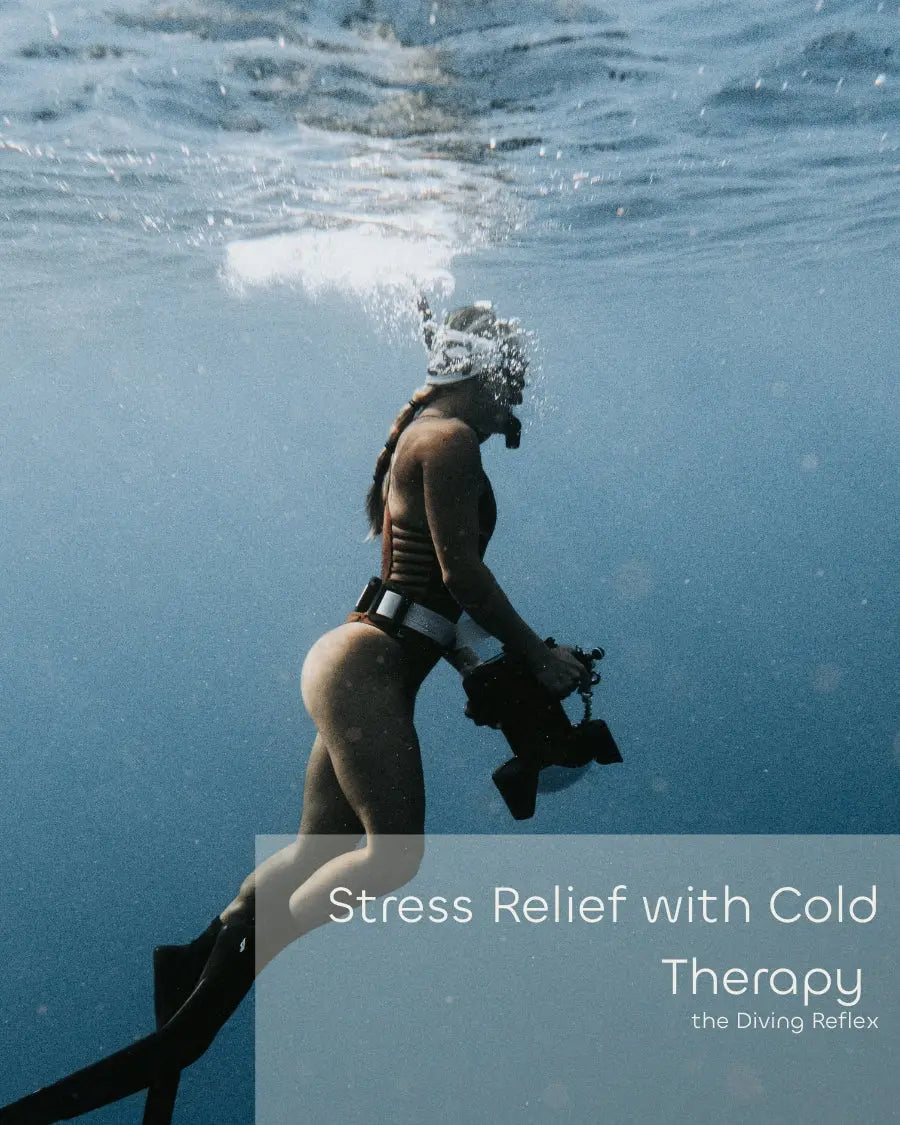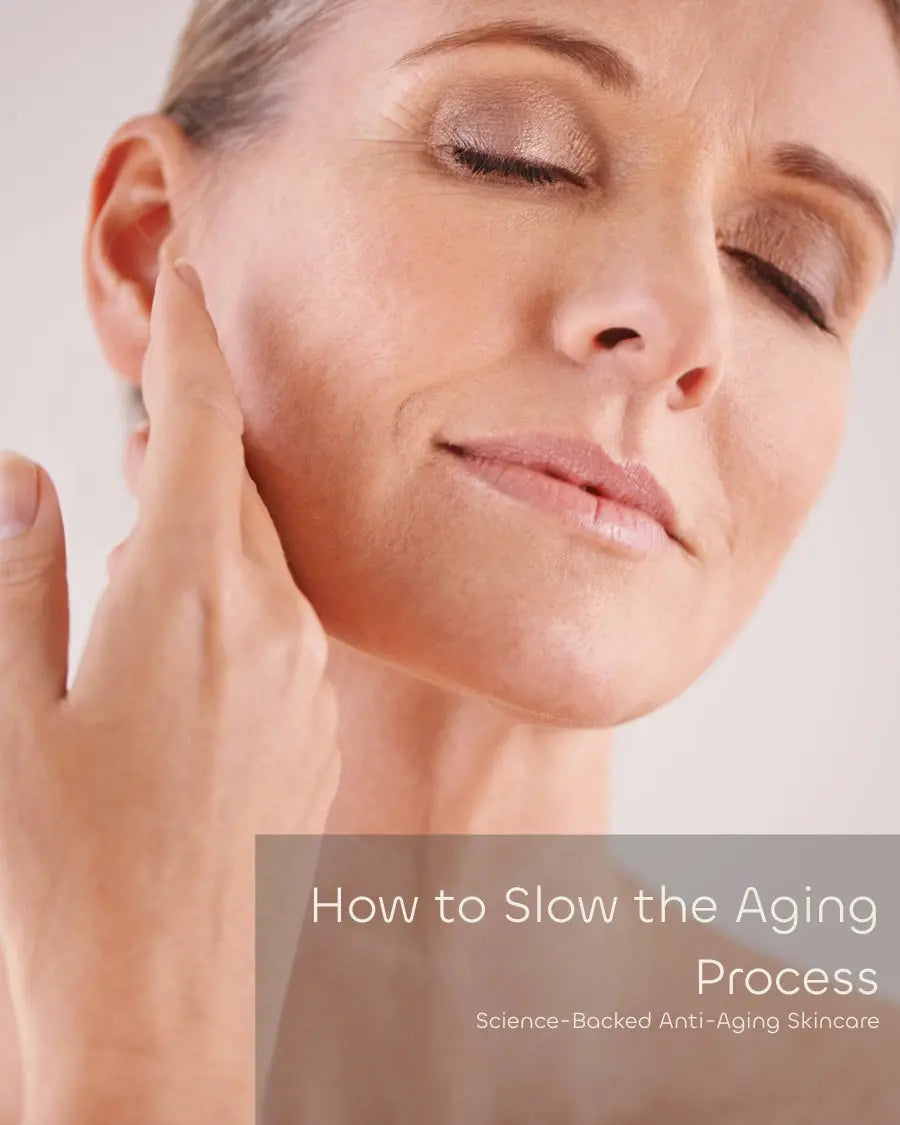
Can Cold Therapy Really Help with Stress Relief? The Science Behind the Diving Reflex
Yes — cold therapy can be a powerful form of stress relief, thanks to a fascinating biological mechanism called the mammalian diving reflex. When your face comes into contact with cold water, your body automatically slows your heart rate, redirects blood flow toward vital organs, and calms the nervous system. This natural reflex doesn’t just lower stress levels — it also helps reduce puffiness, enhance circulation, and leave the skin looking refreshed and balanced. Frosteam™ harnesses this same response safely and effectively, delivering both skincare and stress-calming benefits in one ritual.
What Is the Mammalian Diving Reflex?
The diving reflex is triggered most strongly when the face is immersed in cold water (or exposed to sufficiently cold stimuli). Three hallmark responses occur together:
- Bradycardia — a measurable slowing of heart rate (often reported around 10–25% in humans) to conserve oxygen (Foster & Sheel, 2005).
- Peripheral vasoconstriction — temporary narrowing of surface vessels in skin and extremities to redirect blood toward vital organs (Panneton, 2013).
- Blood redistribution/“blood shift” — especially evident in diving mammals at depth; the chest and central organs are protected (Gooden, 1994).
Crucially, this reflex is most reliably triggered by facial cold exposure rather than cooling other body parts (Wikipédia).
How Cold Exposure Calms the Body
Facial cold activates trigeminal receptors and vagal pathways that shift the autonomic nervous system toward “rest-and-digest.” In humans, diving-reflex activation is associated with a heart-rate drop and autonomic adjustments that conserve oxygen and promote physiological calm (Foster & Sheel, 2005; Panneton, 2013). This aligns with modern neurophysiology showing vagal mechanisms can reduce arousal and support emotional regulation (Porges, 2007).
Visible Benefits for Skin
- De-puff & refine: Vasoconstriction helps reduce morning puffiness and the look of enlarged pores; the reperfusion phase afterward supports a fresher, more even tone (Foster & Sheel, 2005).
- Calmer-looking complexion: Lower perceived stress and autonomic calm can translate into less redness-prone, more comfortable skin (Porges, 2007).
- Healthy glow: The cold-then-warm cycle supports microcirculation for a brighter, well-rested look (Panneton, 2013).
Note: If you have conditions like rosacea, Raynaud’s phenomenon, or cardiovascular disease, talk to your clinician before experimenting with cold exposure.
Wellness Benefits Beyond the Skin
The diving reflex doesn’t just change the skin, it impacts the mind. By slowing the heart and stimulating vagal pathways, short bouts of facial cold can feel like a natural “reset” for anxiety and mental overload (Porges, 2007). This helps explain why cold plunges, ice facials, and contrast therapy are trending for mood and focus, not just aesthetics.
How to Try It (Gently & Safely)
- Start mild: Use water at a controlled cool temperature (not extreme cold) or apply a cooled compress on the face for 10–30 seconds.
- Breathe slowly: Inhale through the nose, exhale long to encourage vagal calm.
- Alternate with warmth: A brief warm phase can enhance comfort and microcirculation post-cold (Panneton, 2013).
- Moisturize afterward: Seal in hydration to support the skin barrier.
Frosteam: Make the Science a Daily Ritual
Frosteam translates this biology into a controlled, spa-like routine at home:
- Hot nano-ionic steam to hydrate deeply and improve serum absorption.
- Cold therapy plate to safely evoke the face-focused diving response—helping reduce puffiness and tighten the look of pores.
- Aromatherapy to support relaxation while you care for your skin.
Frosteam doesn’t claim to stop aging - it helps your skin handle it: less visible stress, a smoother look, and a healthier glow, day after day.

Keep Reading
- Cold Therapy & Collagen: A Skin-Firming Secret Backed by Science
- Serums + Steam: The Glow Duo You Didn’t Know You Needed
- Clinically Proven Skincare: How Frosteam Brings Dermatology Home
References
- Foster, G. E., & Sheel, A. W. (2005). The human diving response: Its function, mechanisms, and control. Scandinavian Journal of Medicine & Science in Sports, 15(1), 3–12. PubMed • DOI
- Gooden, B. A. (1994). Mechanism of the human diving response. Integrative Physiological and Behavioral Science, 29(1), 6–16. Springer
- Panneton, W. M. (2013). The mammalian diving response: An enigmatic reflex to preserve life? Physiology (Bethesda), 28(5), 284–297. PMC • DOI
- Porges, S. W. (2007). The polyvagal perspective. Biological Psychology, 74(2), 116–143. DOI
- Wikipédia. (s.d.). Réflexe d’immersion chez les mammifères. Récupéré le 16 août 2025, à partir de https://fr.wikipedia.org/wiki/R%C3%A9flexe_d%27immersion_chez_les_mammif%C3%A8res


